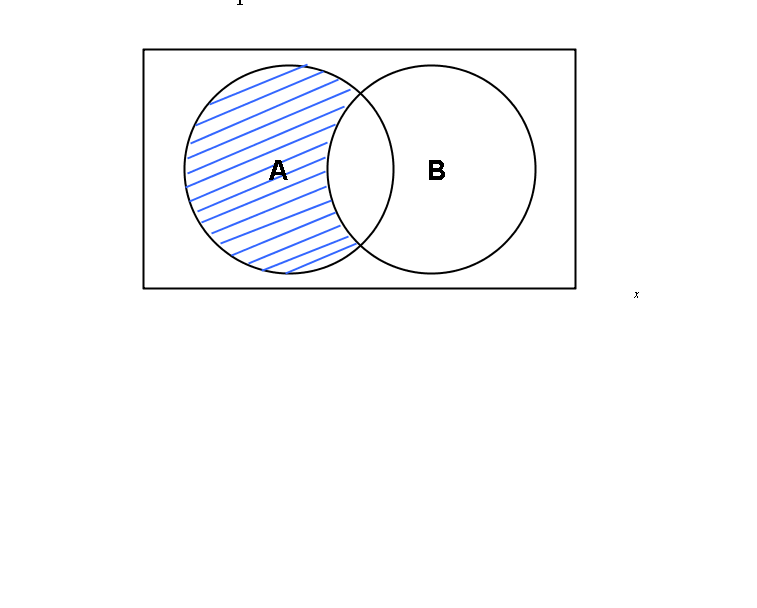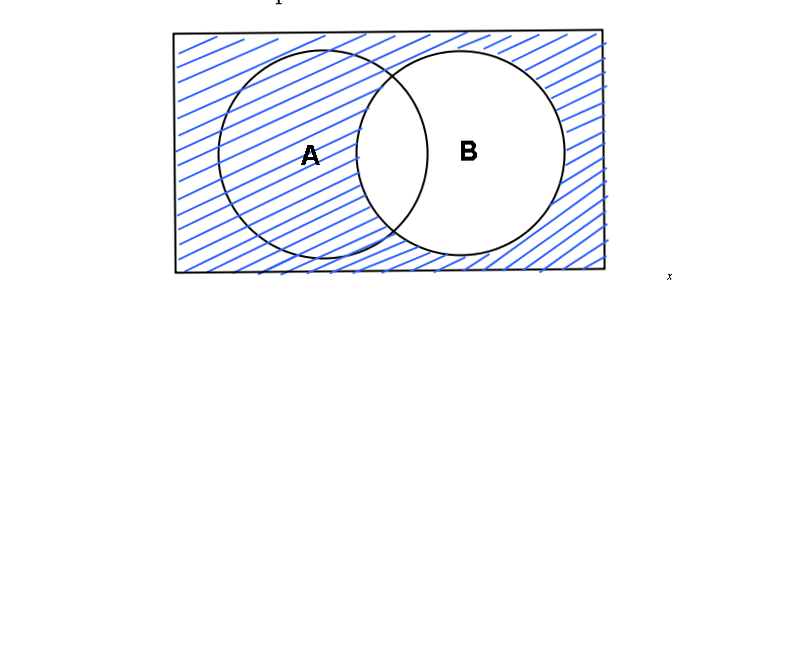What is the complement of B relative to A for sets A = [1,5,8,10,12][1,5,8,10,12] and B = 2,4,5,8,11]2,4,5,8,11]?
I know how to find the complement of B, but I don't understand what relative to A really means.
Thanks
I know how to find the complement of B, but I don't understand what relative to A really means.
Thanks
1 Answer
See below.
Explanation:
Our given sets are:
The complement of
Notice in the example we have an intersection:
These elements belong to both
The notation
We could see this as:
So the complement of
This is represented by the shaded area in the Venn diagram below:

The complement of


